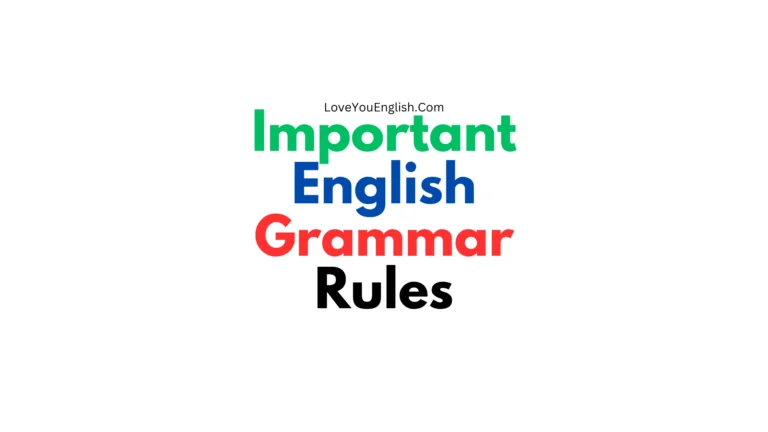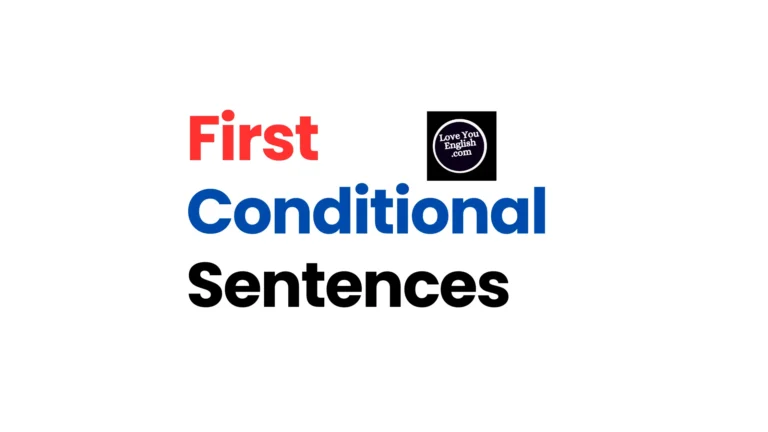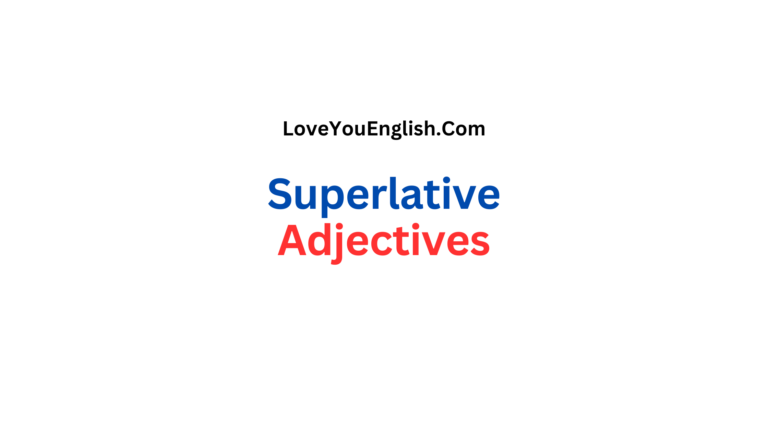Quantifiers in English and How to Use Them
In English grammar, quantifiers are super important because they help us talk about how much or how many of something there is.
They make our language more specific and detailed, so we can describe things better. Whether you’re a pro at English or just starting out, knowing about quantifiers is a must!
In this guide, we will look at quantifiers in English, including their different types, how to use them, and the small differences that can really help with clear communication.
I will also talk about the different categories of quantifiers, where to put them in sentences, and some common mistakes to watch out for.
After reading this, you will understand how to use quantifiers well in your writing and speaking.
What Are Quantifiers?
Quantifiers are words or phrases that indicate the amount or quantity of something.
They answer questions like “How much?” or “How many?” and can be used with both countable and uncountable nouns.
Quantifiers modify nouns and provide information about the number or amount of the noun in question.
Types of Quantifiers
Universal Quantifiers
Universal quantifiers express the idea of “all” or “every” instance of something.
They include:
Example: All students must complete the assignment by Friday.
Existential Quantifiers
Existential quantifiers indicate the existence of at least one instance of something.
They include:
- Some
- Any
- Several
- A few
Example:
Some people prefer tea to coffee.
Proportional Quantifiers
Proportional quantifiers express a portion or percentage of a whole.
They include:
- Most
- Many
- Much
- A lot of
- Plenty of
Example:
Most experts agree that regular exercise is beneficial for health.
Numerical Quantifiers
Numerical quantifiers specify exact amounts or ranges.
They include:
- One, two, three, etc.
- A couple of
- A few
- Several
- Dozens of
Example:
I need to buy a couple of notebooks for my class.
Zero Quantifiers
Zero quantifiers indicate the absence of something.
They include:
- No
- None
- Neither
Example:
There is no evidence to support that claim.
More grammar topics:
- There vs. Their vs. They’re: What’s the Difference?
- How to Use Prepositions in English with Confidence
- English Grammar: The Difference between ‘So’ & ‘Too’
- Mastering Prepositions of Place in English: A Comprehensive Guide
- Learn the Difference Between “Either” and “Neither”
Using Quantifiers with Countable and Uncountable Nouns
It’s important to know the difference between countable and uncountable nouns when using quantifiers.
Countable nouns can be counted one by one like books, cars, and people. Uncountable nouns, on the other hand, can’t be counted separately like water, information, and money.
Some quantifiers can be used with both countable and uncountable nouns, while others are specific to one category.
Let’s explore this further:
Quantifiers for Countable Nouns:
- Many
- Few
- A few
- Several
- A couple of
- A number of
Example:
Many students participated in the school play.
Quantifiers for Uncountable Nouns:
- Much
- Little
- A little
- A bit of
Example:
There is little evidence to support that theory.
Quantifiers for Both Countable and Uncountable Nouns:
Example:
We have enough time to finish the project. (uncountable)
There are enough chairs for everyone. (countable)
It’s important to note that while “much” is typically used with uncountable nouns and “many” with countable nouns, in questions and negative sentences, “many” can sometimes be used with uncountable nouns:
Example:
How much money do you have?
How many people attended the concert?
Placement of Quantifiers in Sentences
The position of quantifiers in a sentence can vary depending on the specific quantifier and the structure of the sentence.
Here are some general guidelines:
Before Nouns
Most quantifiers are placed directly before the noun they modify:
Example: Some people enjoy spicy food. Many books were donated to the library.
After Determiners
When used with determiners like “the,” “my,” or “this,” quantifiers usually come after the determiner:
Example: All the students passed the exam. Both my parents are doctors.
As Pronouns
Some quantifiers can function as pronouns, standing alone without a noun:
Example: Many of us disagreed with the decision. Few were prepared for the challenge.
With “of” Phrases
Certain quantifiers can be used with “of” phrases, especially when referring to a specific group:
Example: Most of the team agreed with the coach’s strategy. Some of my friends are vegetarians.
In some cases, quantifiers can be placed at the end of a sentence for emphasis:
Example: The challenges we face are many. The opportunities for growth are plenty.
Common Mistakes and Pitfalls
While using quantifiers, there are several common mistakes that English learners and even native speakers sometimes make.
Being aware of these can help you avoid them in your own writing and speech:
Confusing “Much” and “Many”
As mentioned earlier, “much” is used with uncountable nouns, while “many” is used with countable nouns.
Mixing these up is a common error:
Incorrect: How much people attended the event?
Correct: How many people attended the event?
Using “Less” Instead of “Fewer”
“Less” is used with uncountable nouns, while “fewer” is used with countable nouns:
Incorrect: There are less cars on the road today.
Correct: There are fewer cars on the road today.
Misusing “Amount” and “Number”
Similar to “less” and “fewer,” “amount” is used with uncountable nouns, while “number” is used with countable nouns:
Incorrect: The amount of students in the class has increased.
Correct: The number of students in the class has increased.
Redundant Use of Quantifiers
Using multiple quantifiers that essentially mean the same thing can be redundant:
Incorrect: There are many several people waiting in line.
Correct: There are many people waiting in line. OR There are several people waiting in line.
Misplacing Quantifiers in Sentences
Placing quantifiers in the wrong position can change the meaning of a sentence:
Incorrect: The students all passed the exam.
Correct: All the students passed the exam. (if you mean every single student)
Using Singular Verbs with Plural Quantifiers
When using quantifiers that indicate plurality, make sure to use plural verbs:
Incorrect: Many of the students is excited about the field trip.
Correct: Many of the students are excited about the field trip.
Nuances and Special Cases
As with many aspects of English grammar, there are nuances and special cases to consider when using quantifiers:
“Any” in Positive, Negative, and Question Forms
The usage of “any” can change depending on whether the sentence is positive, negative, or a question:
Positive (rare): Any help would be appreciated. (meaning “it doesn’t matter what kind”)
Negative: I don’t have any money.
Question: Do you have any siblings?
“Some” in Offers and Requests
While “some” is typically used in positive statements, it’s often used in questions when making offers or requests:
Example:
Would you like some tea? (offering)
Could you lend me some money? (requesting)
“Few” vs. “A Few” and “Little” vs. “A Little”
The presence or absence of “a” before “few” and “little” can significantly change the meaning:
Few: indicates a small number, often with a negative connotation
A few: indicates some, often with a positive connotation
Little: indicates a small amount, often with a negative connotation
A little: indicates some, often with a positive connotation
Example:
Few people attended the meeting. (negative – disappointing turnout)
A few people attended the meeting. (positive – some people came)
“All” vs. “Every”
While both “all” and “every” indicate totality, they are used differently:
All: used with plural nouns or uncountable nouns
Every: used with singular nouns to refer to individual items in a group
Example:
All students must complete the assignment. (referring to the group as a whole)
Every student must complete the assignment. (emphasizing individual responsibility)
Quantifiers in Comparative Structures
Quantifiers can be used in comparative structures to express differences in quantity:
Example:
There are twice as many students in this class as in the other one. We have far fewer resources than we need.
Quantifiers in Academic and Professional Writing
In academic and professional contexts, using quantifiers accurately and appropriately is crucial for conveying precise information.
Here are some tips for using quantifiers effectively in these settings:
Be Specific When Possible
While general quantifiers like “many” or “some” have their place, try to use more specific quantifiers when the information is available:
Vague: Many participants responded to the survey.
Specific: Approximately 75% of participants responded to the survey.
Use Appropriate Hedging
In academic writing, it’s often necessary to qualify statements to avoid overgeneralization.
Quantifiers can be useful for this purpose:
Example:
Most studies indicate a correlation between exercise and improved mental health.
Be Consistent
When presenting data or research findings, be consistent in your use of quantifiers throughout your document:
Example:
If you use “the majority” to refer to percentages over 50%, stick to this usage throughout your paper.
Consider Your Audience
The level of precision required in your quantifiers may depend on your audience. A general audience might be satisfied with broader terms, while a specialized academic audience may expect more precise quantification.
Use Quantifiers in Data Presentation
When presenting data in charts or graphs, quantifiers can help summarize key findings:
Example:
“A significant majority (over 80%) of respondents agreed with the proposed changes.”
Quantifiers in Everyday Communication
In daily conversations and informal writing, quantifiers help us express approximate amounts and make general statements.
Here are some ways quantifiers are commonly used in everyday communication:
Expressing Opinions and Generalizations
Quantifiers allow us to make broad statements without committing to absolutes:
Example:
Most people enjoy a good comedy movie.
Discussing Habits and Frequencies
Quantifiers are useful for talking about how often we do things:
Example:
I drink coffee most mornings. We eat out a few times a month.
Making Requests and Offers
As mentioned earlier, quantifiers like “some” and “any” are often used in polite requests and offers:
Example:
Could I have some water, please? Would you like any help with that?
Expressing Enthusiasm or Disappointment
Quantifiers can help convey emotions about amounts or quantities:
Example:
There were so many people at the concert! I have very little patience for rudeness.
Giving Approximate Measurements
In informal settings, quantifiers can replace precise measurements:
Example:
Add a bit of salt to the recipe. It’s only a couple of miles away.
Conclusion
Quantifiers are an essential part of the English language, allowing us to express amounts, proportions, and quantities with precision and nuance.
From universal quantifiers that encompass entire groups to existential quantifiers that indicate the presence of at least one instance, these versatile words and phrases enrich our communication in countless ways.
Understanding the distinction between countable and uncountable nouns is crucial for using quantifiers correctly, as is being aware of their proper placement in sentences.
By avoiding common pitfalls and paying attention to the subtle differences between similar quantifiers, you can enhance the clarity and effectiveness of your English communication.
Whether you’re engaged in academic writing, professional correspondence, or everyday conversation, mastering the use of quantifiers will undoubtedly improve your language skills.
As with many aspects of language learning, practice and exposure to varied contexts will help you develop an intuitive sense of how to use quantifiers appropriately.
Remember that language is dynamic, and usage can vary across different English-speaking regions and contexts.
Stay curious about the nuances of quantifier usage, and don’t hesitate to consult style guides or seek clarification when in doubt.
With time and practice, you’ll find that using quantifiers becomes second nature, allowing you to express yourself with greater precision and confidence in English.








